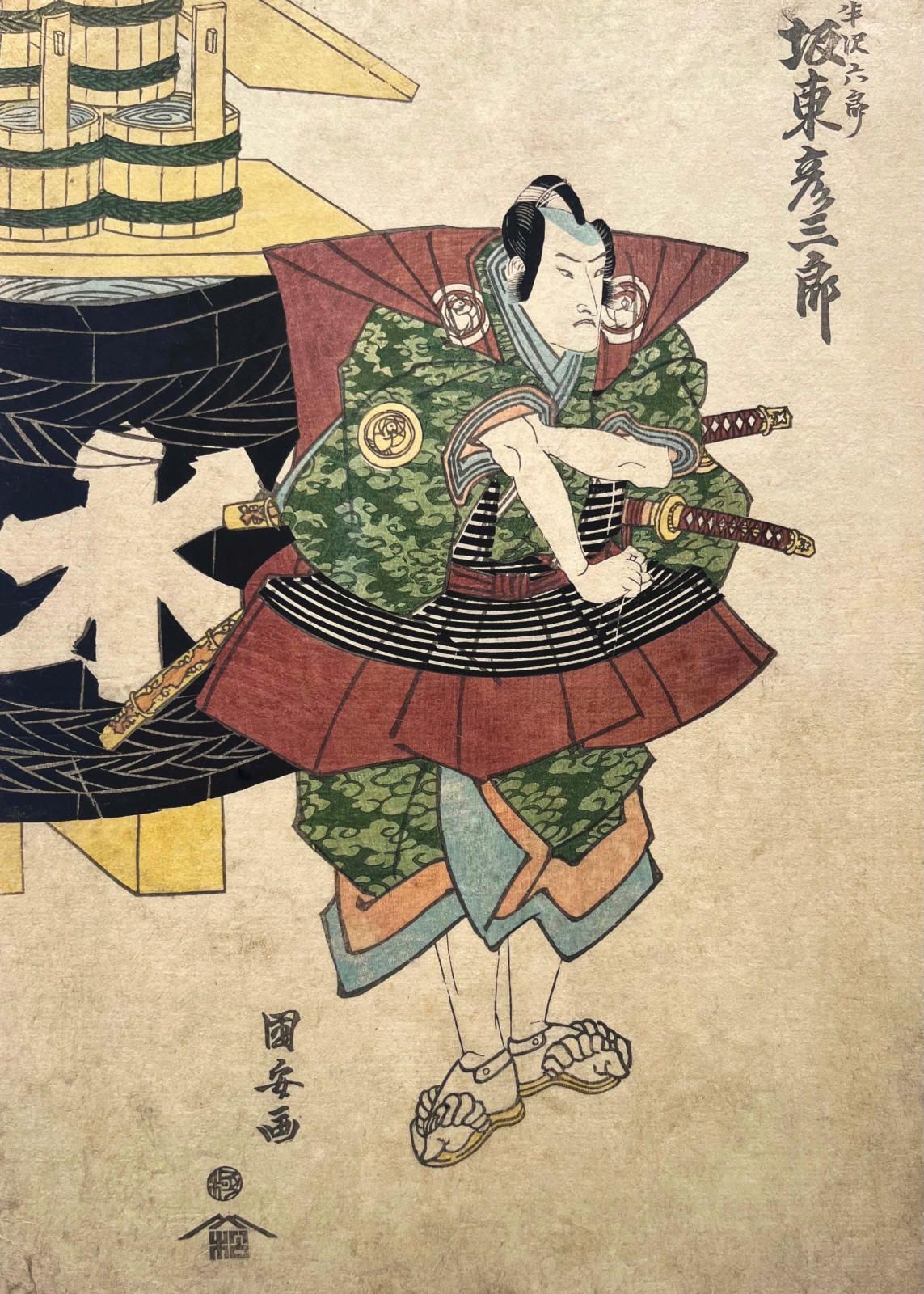Toyokuni III (1786-1864), also known as Utagawa Kunisada, was born in the Honjo district of Edo under the given name Kunisada Tsunoda. Kunisada’s family owned a small family ferryboat service. His father, an amateur poet, died when Kunisada was a child and the family business provided some financial security. During his childhood, he showed considerable promise in painting and drawing. Due to strong familial ties with literary and theatrical circles, he spent time studying actor portraits.
In the year 1800 or shortly thereafter Kunisada was accepted by the master Toyokuni I, head of the Utagawa school, as an apprentice in his workshop. In keeping with a tradition of Japanese master-apprentice relations, he was then given the official artist name of ‘KUNI-sada’, the first character of which was derived from the second part of the name ‘Toyo-KUNI’. Kunisada's first known woodblock print dates to 1807, his first illustrated book to 1808. His career took off from the beginning, with many of his works become immediate successes so that he quickly became known in contemporary sources as the ‘star attraction’ of the Utagawa school. Kunisada’s work embodies the characteristics of the Utagawa school, focusing on traditional subjects such as kabuki, bijinga, shunga (erotic prints), and historical prints.
He signed his works Kunisada, sometimes with the studio names of Gototei and Kochoro affixed. Later, he adopted the go or art-name of his teacher and became Toyokuni III, head of the Utagawa school. Kunisada collaborated with one of or both Hiroshige and Kuniyoshi in three major series as well as on a number of smaller projects. Kunisada passed away in 1864 at age 70 in the same neighbourhood that he was born. Kunisada was a highly popular, and the most active and perhaps the most commercially successful, Japanese ukiyo-e artist of the 19th century. In his own time, his reputation surpassed those of his contemporaries Hokusai, Hiroshige, Kuniyoshi.
Always at the vanguard of his time, and in tune with the tastes of the public, he continuously developed his style, which was sometimes radically changed, and did not adhere to stylistic constraints set by any of his contemporaries. He was known as a trendsetter of Japanese woodblock designs. Over his five-decade long career, his productivity was extraordinary with over 14,500 individual designs attributed to his name.
